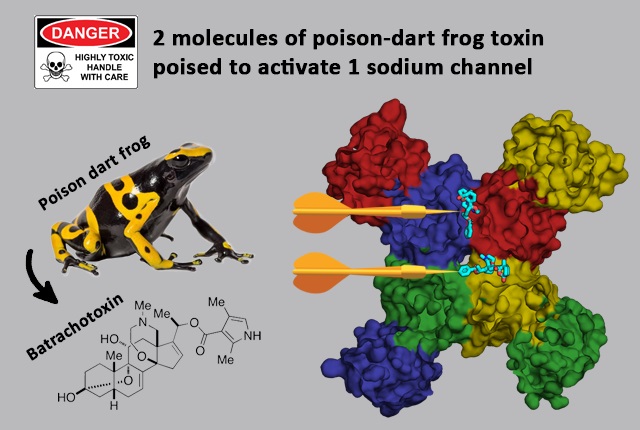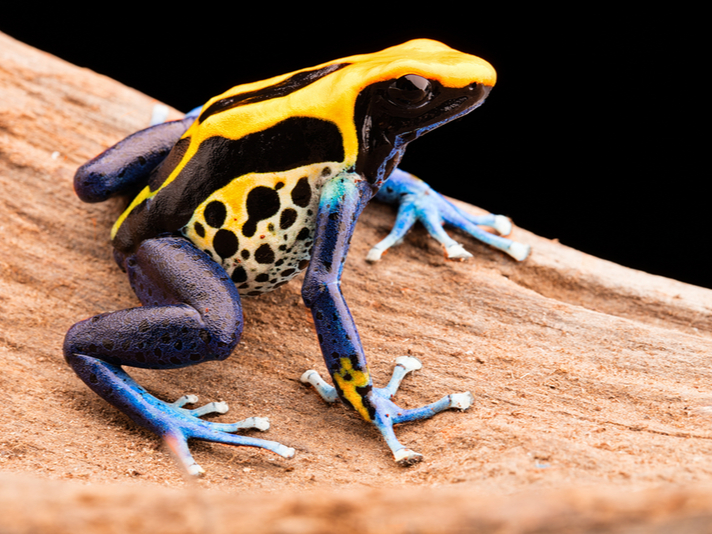According to the researchers, the poison instantly cramps the body's muscles, makes the heart beat erratically and ultimately causes cardiac arrest.
Pharmacology researchers at the University of Washington School of Medicine have subjected poison dart frog toxins to cryo-electron imaging and have observed just how fast the batrachotoxin poisons on the backs of Amazon poison frogs are in incapacitating would be predators of these tiny and deadly amphibians of the family Dendrobatidae. The dart frog poison has been used for hundreds of years by indigenous tribes in Colombia, who coat their blow darts for hunting. The poisons quickly subdue big game.
“Predators that attack these dendrobatid frogs are paralyzed so rapidly that they can’t clamp down on the frogs to kill and eat them,” said one of the senior researchers on a recent batrachotoxin study, the late William Catterall, a professor of pharmacology at the University of Washington School of Medicine said in a news release put out by the university. “It is so toxic that wiping the toxin secretion from the back of a single frog is sufficient to poison several blow darts, which will each immobilize or kill large prey,” he said. Catterall died February 28, 2024 at the age of 78.

The derivative batrachotoxin-A benzoate binds to two separate but similar receptor sites in the cardiac sodium channel. Image by George Wisedchaisri/University of Washington School of Medicine
According to the researchers, the poison instantly cramps the body’s muscles, makes the heart beat erratically and ultimately causes cardiac arrest. And just a few wipes of the poison from the backs of these frogs is enough poison to coat several blow darts.
Poison Dart Frogs And Toxicity
Poison Dart Frog Coloration Conceals As Well As Warns
The researchers employed high resolution cryogenic electron microscopy to conclude at the atomic level that the derivative batrachotoxin-A benzoate binds to two separate but similar receptor sites in the cardiac sodium channel. This double binding has provided the researchers with insight into how this poison is so quick and deadly.
The complete paper, “Dual receptor-sites reveal the structural basis for hyperactivation of sodium channels by poison-dart toxin batrachotoxin” can be read on the Nature Communications journal website.



